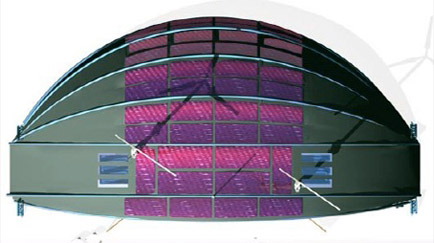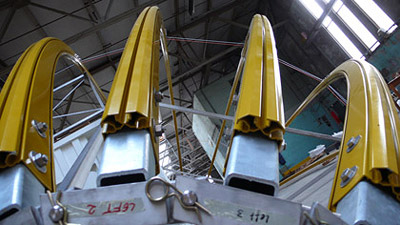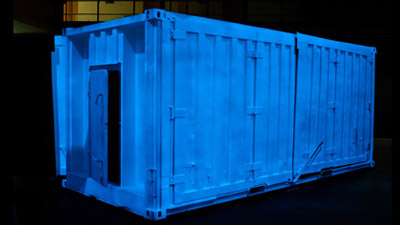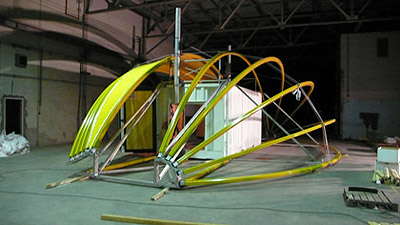| Development of the World in a Shell container. Art intervention in a technical surrounding. The aim was to develop an autarkic, compact and mobile living/working unit that can be placed and unfolded in any climate and surrounding, featuring an intelligent plug and play modular interior, a dual membrane cover tent, a self-loading possibility, an independent energy household and a low cost communication toolbox, all based on sustainable outlines and renewable energy. 
The World in a Shell is under patronage of the Rector Magnificus of the TU Delft
and of Mr. Koichiro Matsuura, the Director-General of UNESCO. The World in a Shell has been nominated to win the "Ode
aan de Techniek" price, participated at the 1st International Architecture Biennale Rotterdam and was unveiled during
an exhibition at the NAi (Dutch National Architecture Institute) and V2 _, the Institute for Unstable Media in Rotterdam in 2010.
Technical applications and research protocols, essential to transform the container into a self-sufficient unit, have been established. Artificial intelligence and self-learning capabilities are installed and will be further enhanced the unit's functionality. The unit's independent energy and water household will be continually monitored. The information coming from the integrated sensor and intelligent system will be available on the Internet and used to study the unit's capabilities for crisis management and disaster relief situations. Related links: |
|
|
|||||||||||||||||||





